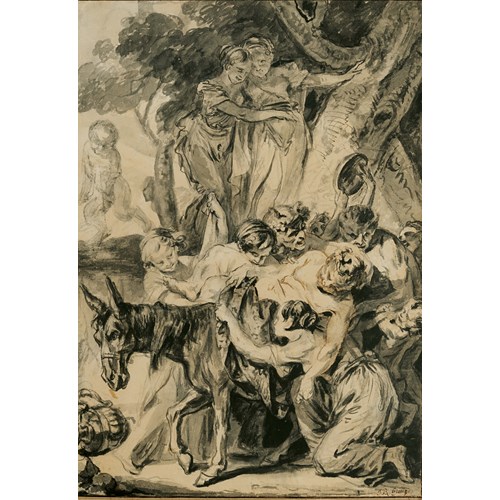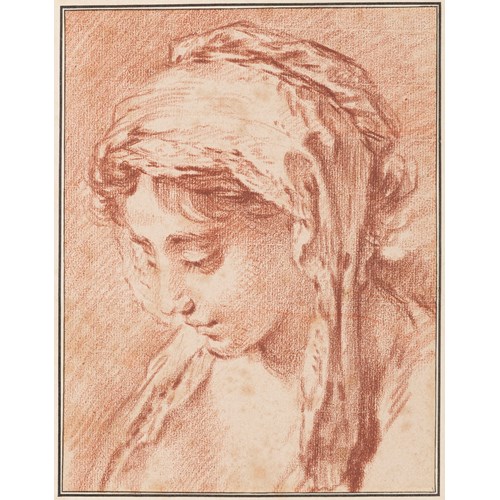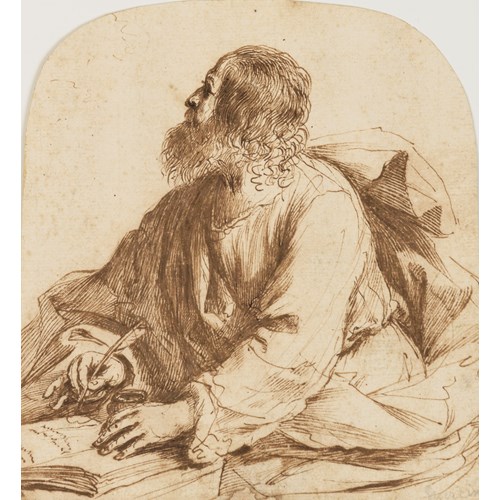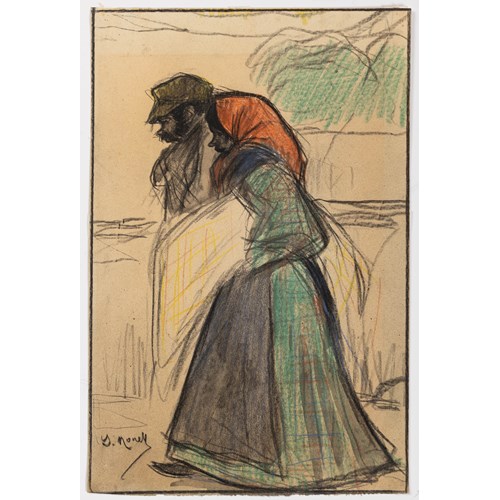Theodor VON HOLST
The Witches’ Sabbath (Walpurgisnacht)
Medium Watercolour and gouache on paper, laid down on card
Dimension 18.5 x 22.7 cm (7¹/₄ x 8⁷/₈ inches)
The attribution of this drawing has been confirmed by Max Browne, who dates the sheet to c.1830-1835. The complex composition of the sheet is a typical feature of Von Holst’s draughtsmanship. As Gert Schiff has noted, ‘literary painter though he was, Von Holst hardly ever created illustrations but rather improvisations upon a given text. In his drawings, he starts by outlining the principal action with two, three, or more figures and then adds other motifs, rarely in the same size and quite often without relevance to the subject, sketching them around, in between, or even across the main incident. He thus creates confused, yet evocative, and, in the most literal sense, open-ended depictions which engage the viewer’s fancy by an unresolved tension between the identifiable core and those added, incommensurate, and unexplained materials. One can find in these drawings a typical reflection of the romantic mind in all its impatience...’
A similar approach is also seen in Von Holst’s paintings as, for example, in two large canvases inspired by Faust. One of these, A Scene from Goethe’s ‘Faust’, was painted in 1833 and is now on loan to the Landesmuseum Oldenburg in Oldenburg, Germany. The other, a painting of Mephistopheles Holding a Goblet Leaps Above a Cauldron Before a Young Witch and Demonic Figuresof 1834, is in the collection of Tate Britain in London. In both of these narrative paintings, as in the drawing here exhibited, Von Holst seems to have combined elements and characters from different parts of Goethe’s tale.
Medium: Watercolour and gouache on paper, laid down on card
Signature: Inscribed Elfin Ground in pencil on the reverse.
Dimension: 18.5 x 22.7 cm (7¹/₄ x 8⁷/₈ inches)
Provenance: Probably the posthumous Von Holst studio sale, London, Christie and Manson, 26 June 1844
Private collection, England
Anonymous sale, London, Sotheby’s, 14 October 1999, lot 826 (as Follower of Richard Doyle)
Day & Faber, London
Jean-Luc Baroni Ltd., London, in 2003;
Private collection.
Exhibition: New York and London, Jean-Luc Baroni Ltd., Master Drawings, 2003, no.36.
More artworks from the Gallery


_T638278098131351502.jpg?width=2000&height=2000&mode=max&scale=both&qlt=90)






